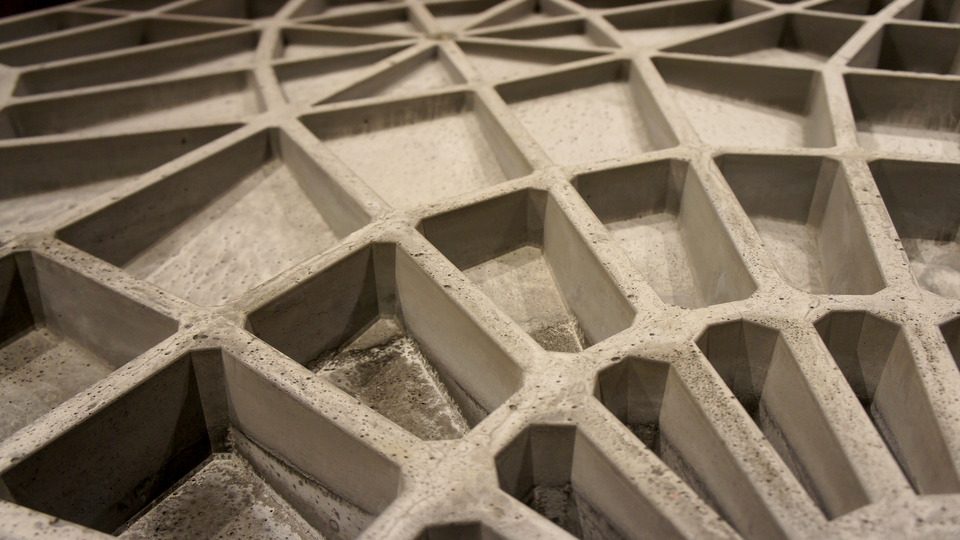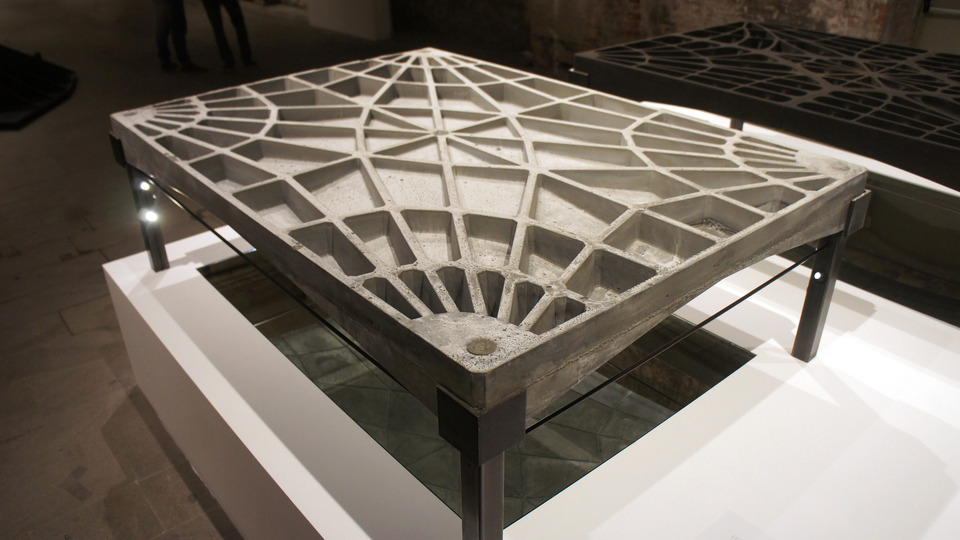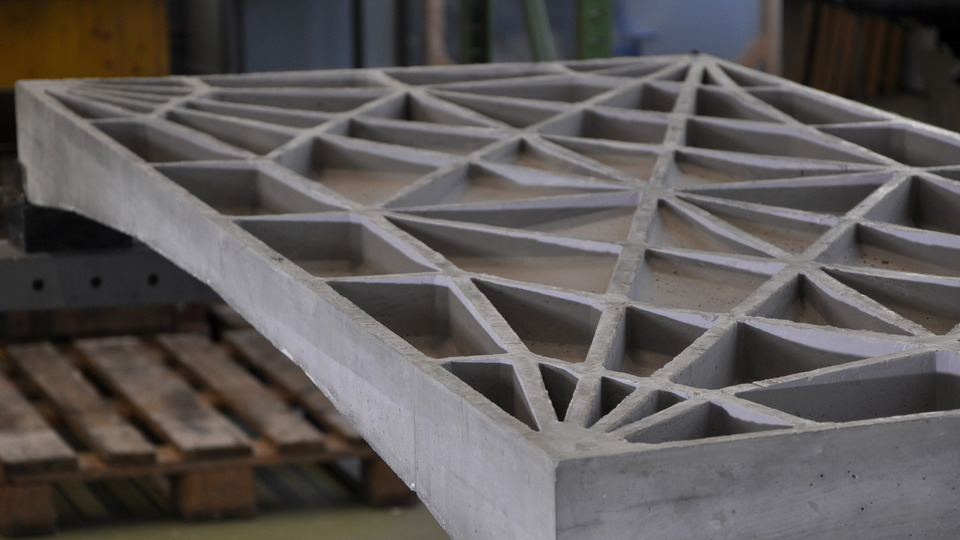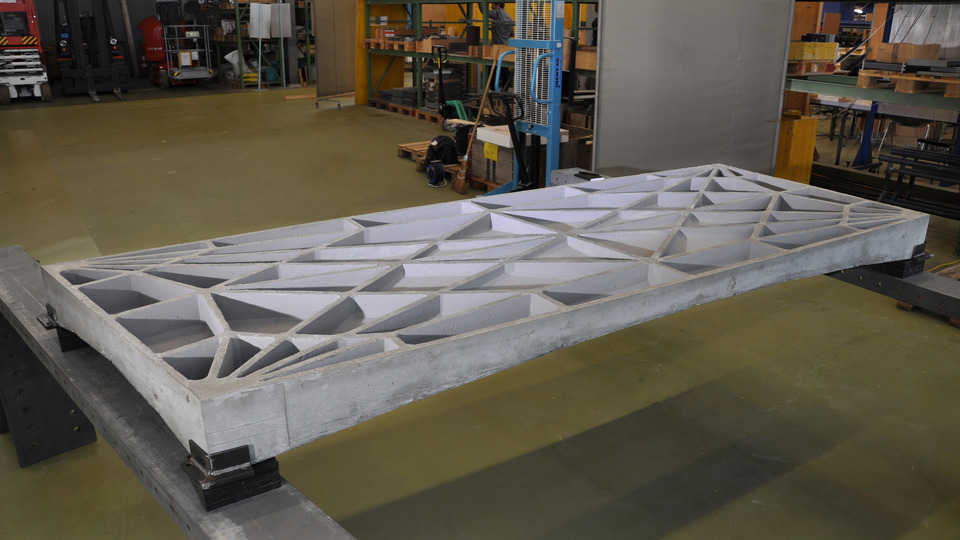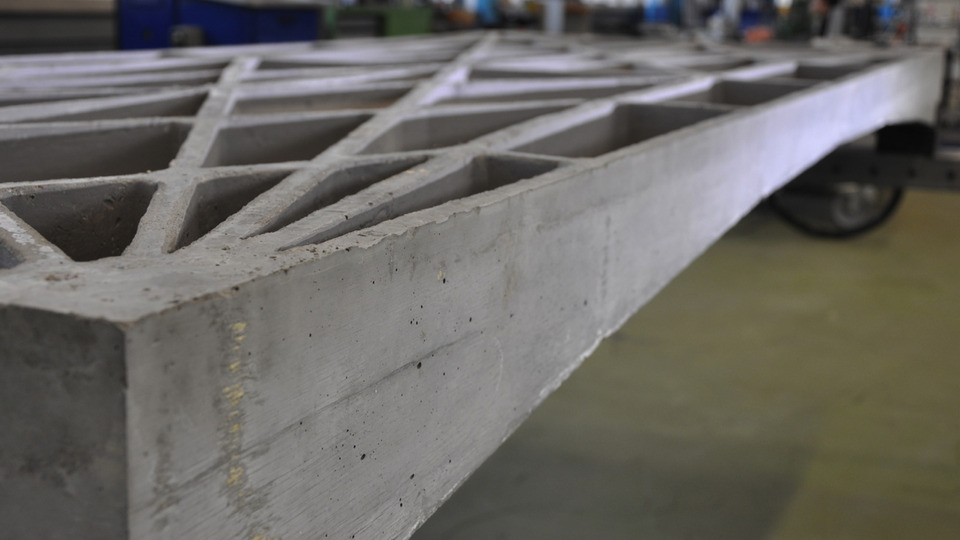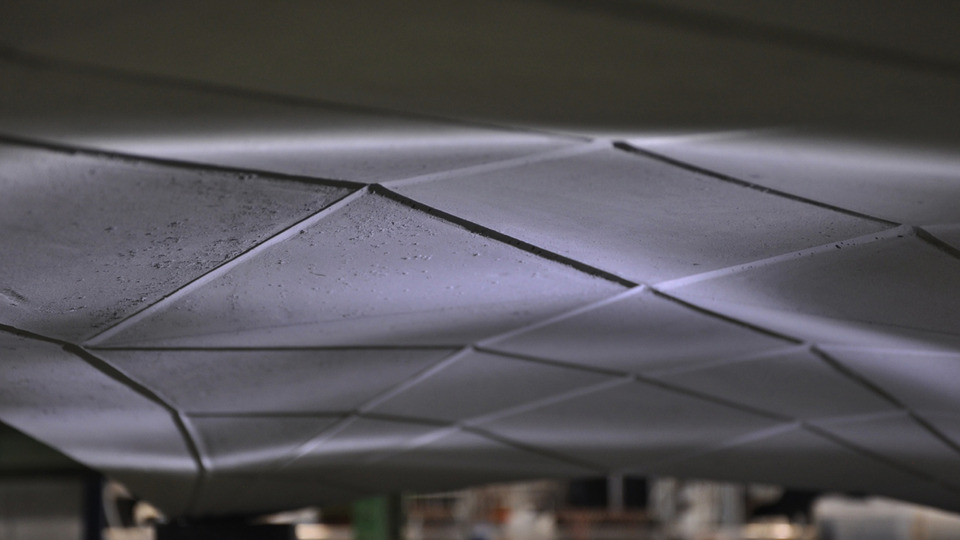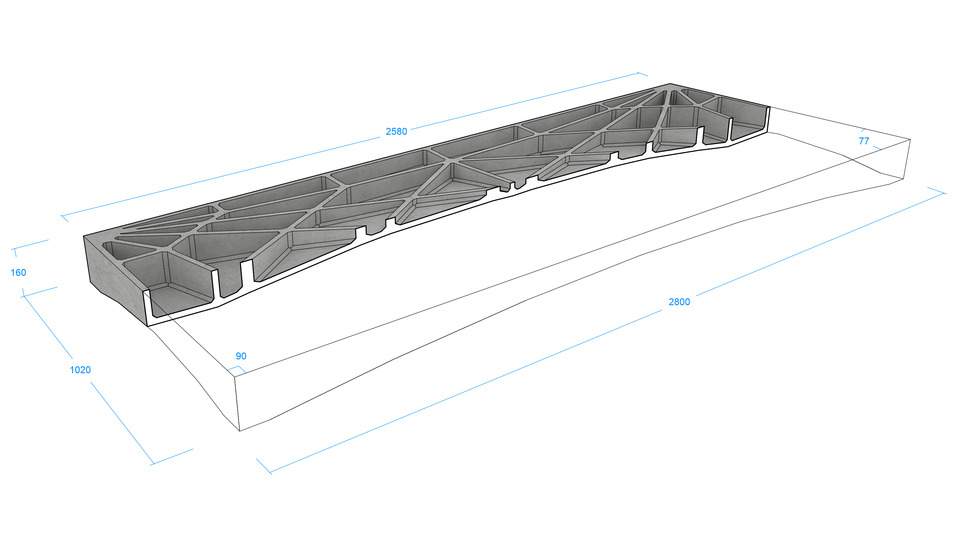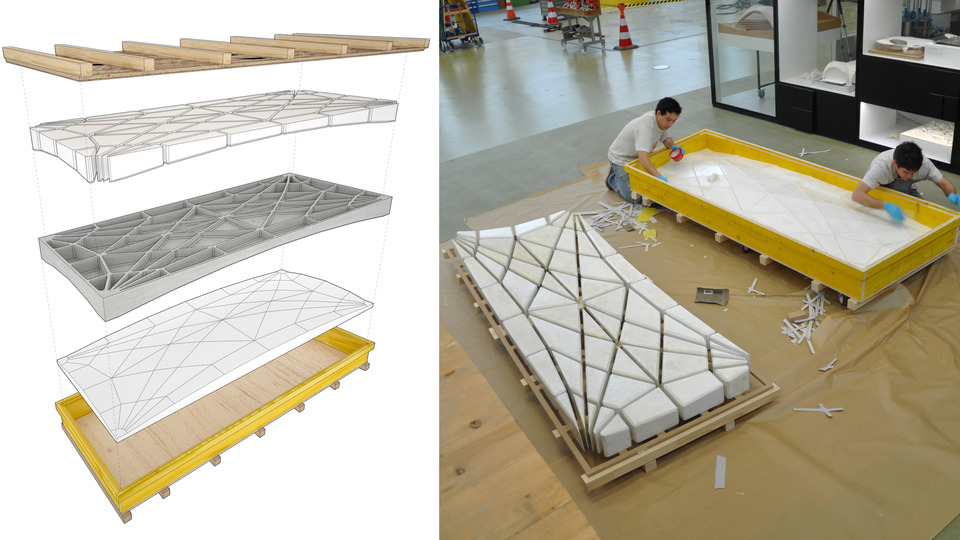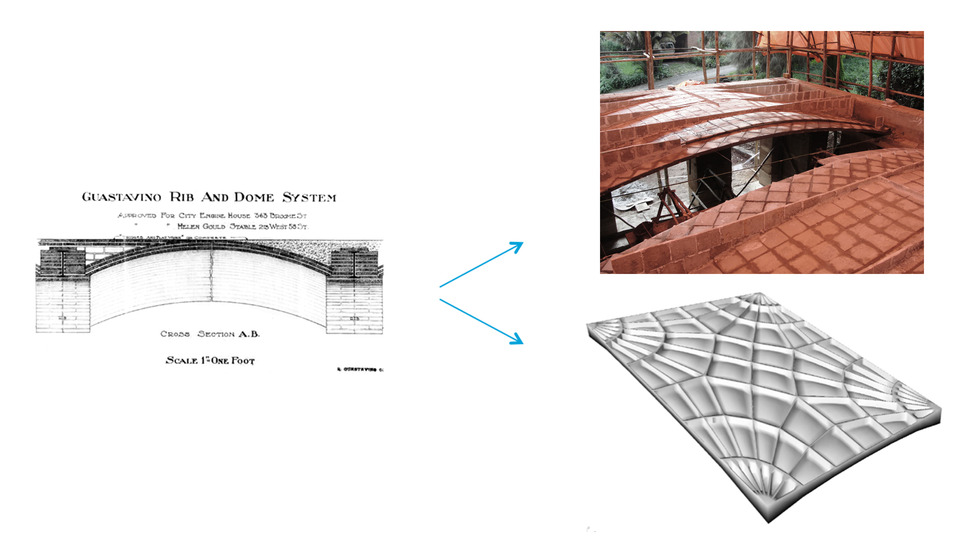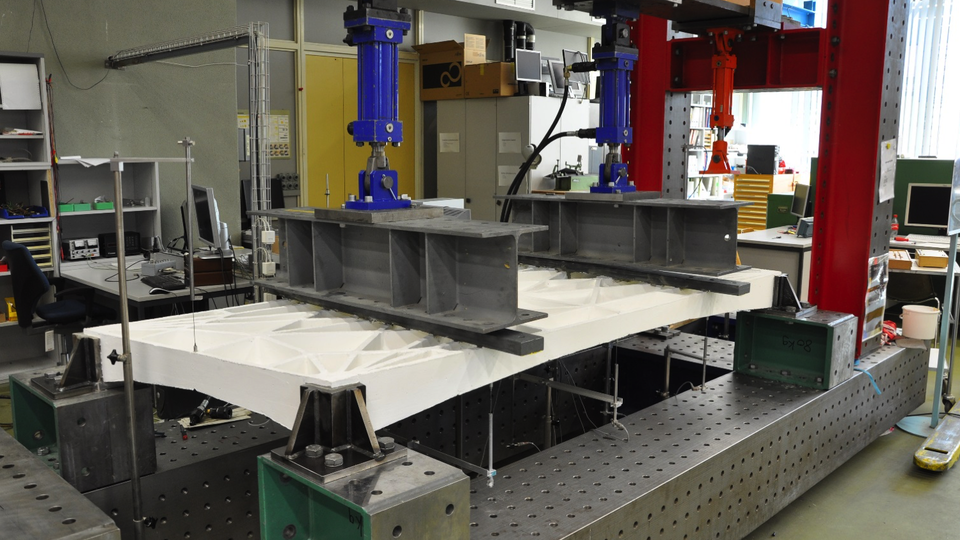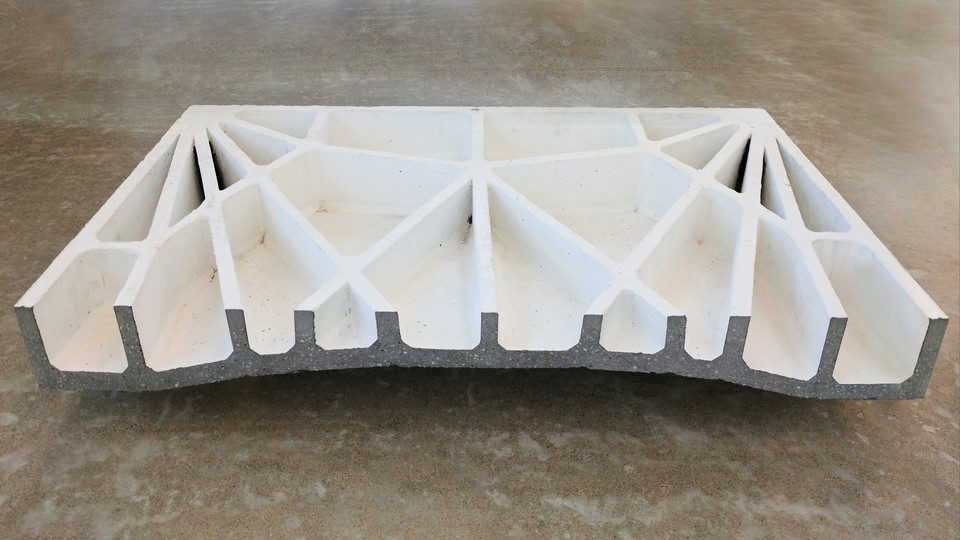More info
Traditional concrete floor slabs working in bending typically consist of a solid section of concrete reinforced with large amounts of steel. In contrast, the HiLo floors use a thin, doubly curved funicular shell with vertical stiffeners to transfer loads to the supports through compression forces only. The forces are accumulated in the corners, where their outward thrust is absorbed in post-tensioned ties.
Thus, by placing material only where it is structurally needed, following the flow of forces in compression and tension, and by keeping all materials separate, the HiLo floor system saves 70% of concrete and 90% of reinforcement steel compared to the standard reinforced concrete slab, and allows for easy recycling at end of life.
Furthermore, the funicular geometry of the floors results in low stresses in the structure allowing low-strength materials with a low carbon footprint to be used, and even high percentages of construction demolition waste instead of our scarce natural resources.
This research was featured in the Beyond Bending exhibition at the Venice Architecture Biennale 2016.
In HiLo @ NEST, these principles are for the first time demonstrated in a real building, providing an outlook at a real, disruptive opportunity to the construction industry to dramatically reduce carbon emissions by simply replacing an unexpectedly wasteful component of the buildings all around us.

